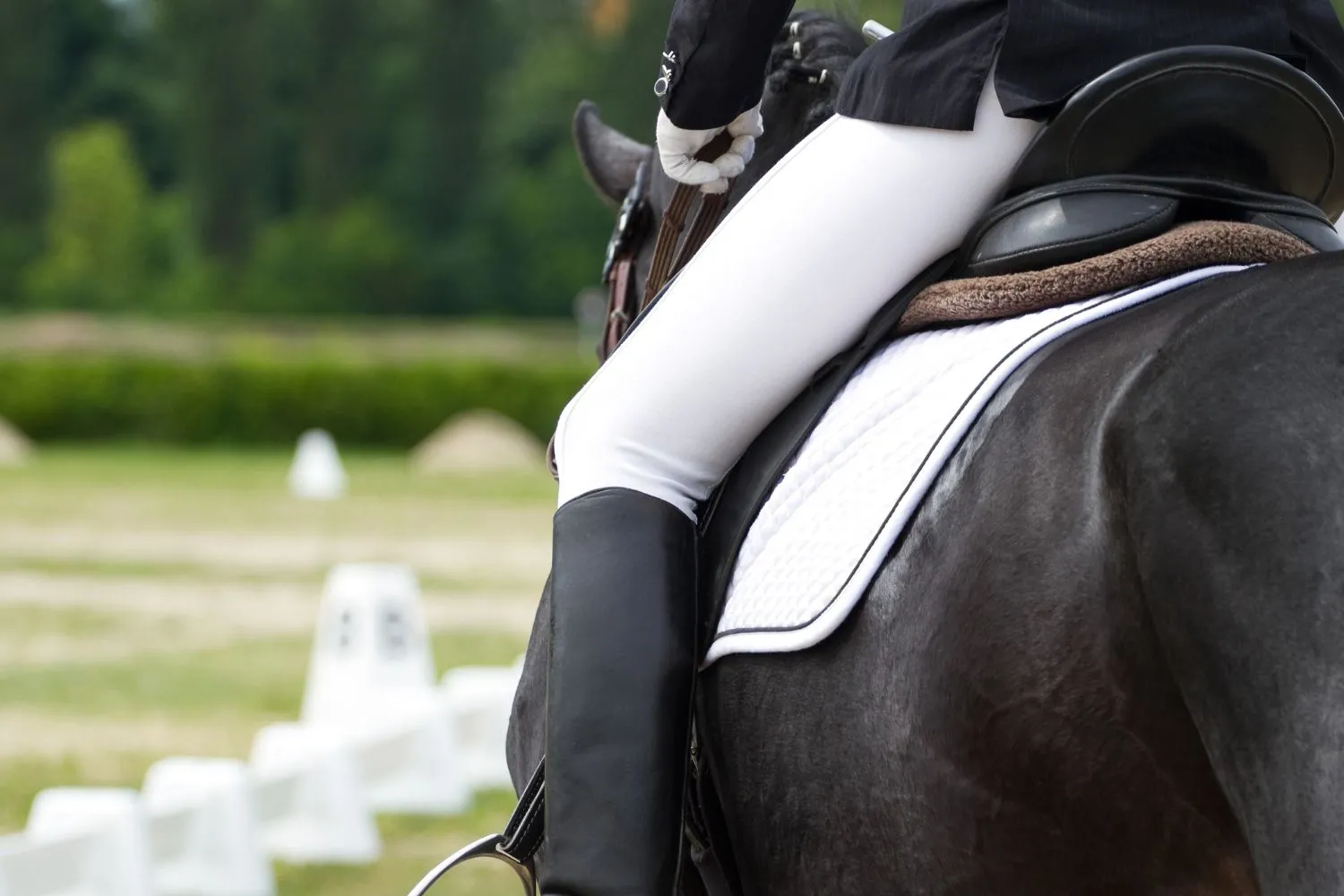Menu

Sitting down in the saddle and following the horse’s movements with ease and harmony is among the most challenging aspects of dressage riding. Dressage is certainly not easy. Many dressage horses today are bred to have significant back swings and a robust gait, which can pose quite a challenge for the rider to follow. Nevertheless, it is entirely possible to master this with continuous practice.
Read also: Don’t forget your own body!
Following the horse’s movements as softly and effortlessly as possible provides the best conditions for fine and correct interaction with the aids. Therefore, it is essential to train your seat and maintain its quality. Simultaneously, a well-balanced seat can make all the difference when assessing a riding pair as a whole. Don’t you think it's beautiful when a rider sits so still that they seem to merge seamlessly with their horse?
There are especially three ‘secrets’ that are important to know if you want to develop a beautiful seat. If you work with all three – and continue doing so – you may also be able to follow the horse’s movements so effortlessly, it appears as if you have never done anything else. In other words, anyone can learn to sit beautifully in the saddle – it’s just a matter of knowing the secrets behind it and what to train towards.
Firstly, you must be able to sit correctly in the saddle. This involves letting the weight from your legs and pelvis press down into the saddle and the weight from your knees and lower legs into the stirrups. Your pelvis should be positioned in the deepest part of the saddle, and you should sit on your two seat bones. Meanwhile, you should stretch your back and head upwards as much as possible – somewhat as if a string were attached to your helmet pulling you upwards.
It may sound paradoxical, but it takes flexibility to sit still – at least when it involves sitting on a horse. To follow the large movements, you need to be flexible in your body, especially in your waist and hips. As mentioned earlier, the lower part of your body must be able to follow the horse, while the upper part remains extended and leaned back.
However, you must not feel tense. Although you need to use your muscles, especially in the pelvis and lower back, you should try to relax – and that’s hard. Conversely, you must not be so relaxed that you become too limp or 'floppy.' It's about being relaxed in an elastic and yielding way. If you practice this, it will become much easier for you to follow the horse – even if it suddenly takes a large step or makes an unexpected movement.
One of the most important things to know if you are to follow the horse's movements is that it is not the horse that determines the pace and stride length, but the rider. By setting the horse’s pace with the rhythm from your seat, you should not try to follow the horse, but instead make the horse follow you. This makes it easier to sit in the seat, and not least, it becomes much more beautiful to watch.
Specifically, it involves keeping your lower back tight for a split second when the horse lifts a leg off the ground and then pushing it forward with your pelvis before it sets the leg down again. This way, you can influence the horse’s rhythm and stride length, and you both will appear much more harmonious when you sit down in the saddle.
Read also: Eventing rider Bianca Bagge: Find the courage when you need to jump in the terrain.